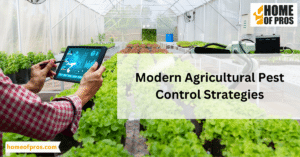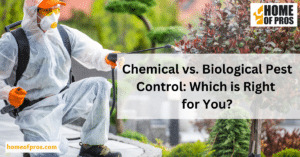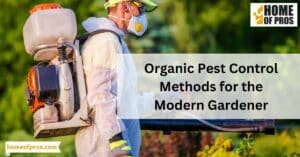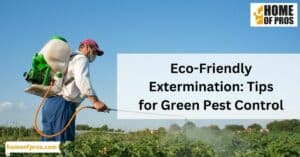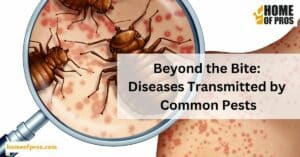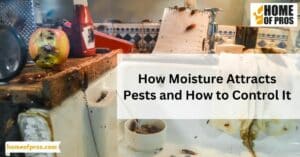Pesticide Safety is paramount to protect both the environment and individual health. Always follow label instructions precisely when applying, ensure secure storage away from children and pets, and dispose of unused portions at designated hazardous waste facilities. Taking these steps ensures a safer home and a cleaner planet.
Pesticides, vital in modern agriculture and home protection against pests, come with a dual responsibility. While they promise bountiful harvests and pest-free spaces, improper usage risks both personal health and environmental well-being. For those using these powerful substances, it’s crucial to prioritize safety to protect ourselves and our planet.

The Right Way to Use Pesticides
In a world where pests threaten our crops and homes, pesticides serve as a critical line of defense. However, their efficacy and safety are as much about the product as they are about the method of application. Here’s a deeper dive into the proper utilization of these potent substances:
Table: Key Considerations for Using Pesticides Safely
| Aspect | Description |
|---|---|
| Label Instructions | Always read thoroughly. They provide the correct dosage, application method, and other vital information. |
| Over-Application Dangers | Excessive use can lead to residual toxins, harm beneficial insects, and even damage the plants you’re trying to protect. |
| Targeted Application Benefits | Applying pesticides only where needed ensures efficiency, conserves the product, and reduces potential harm. |
| Safety Gear & Precautions | Essential items include gloves, masks, and protective eyewear. Ensure well-ventilation and avoid skin contact. |
Wrapping up, pesticides are tools—powerful yet demanding respect. The balance between protection and potential harm is delicate. By equipping ourselves with the right knowledge and taking deliberate, careful actions, we not only ensure our safety but also work towards a harmonious coexistence with the environment.
Storing Pesticides Safely
Proper storage of pesticides is crucial not just for the effectiveness of the product, but also to ensure the safety of our homes and environment. As we delve into the essentials of safe pesticide storage, remember that the bottle’s contents hold the power to protect or harm, based on our actions.
Key Points for Safe Pesticide Storage:
- Risks of Improper Storage:
- Accidental poisoning, especially in children.
- Contamination of food, water, and household items.
- Reduced effectiveness of the pesticide.
- Ideal Storage Conditions:
- Store in a cool, dry place, away from direct sunlight.
- Always keep in their original containers with labels intact.
- Ensure the container is sealed tightly after each use.
- Safety First:
- Designate a specific storage area, preferably locked or out of reach, for pesticides.
- Always keep them away from food and water sources.
- Ensure they remain inaccessible to children, pets, and wildlife.
In conclusion, the way we store pesticides determines their safety in our homes. With due diligence and the right practices, we can minimize risks while benefiting from their protective properties.
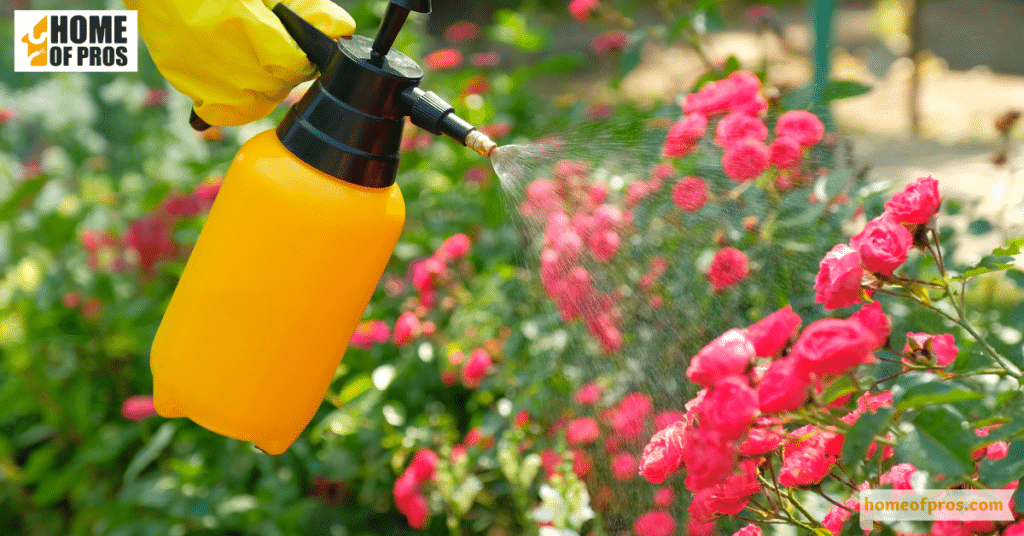
Responsible Disposal of Unused or Expired Pesticides
As we champion a pest-free environment, an often-neglected chapter in this journey is the aftermath: the correct and thoughtful disposal of unused or expired pesticides. Their application requires strategy, and similarly, their disposal demands conscientious care, ensuring that in our bid to combat pests, we don’t inadvertently birth a broader ecological problem.
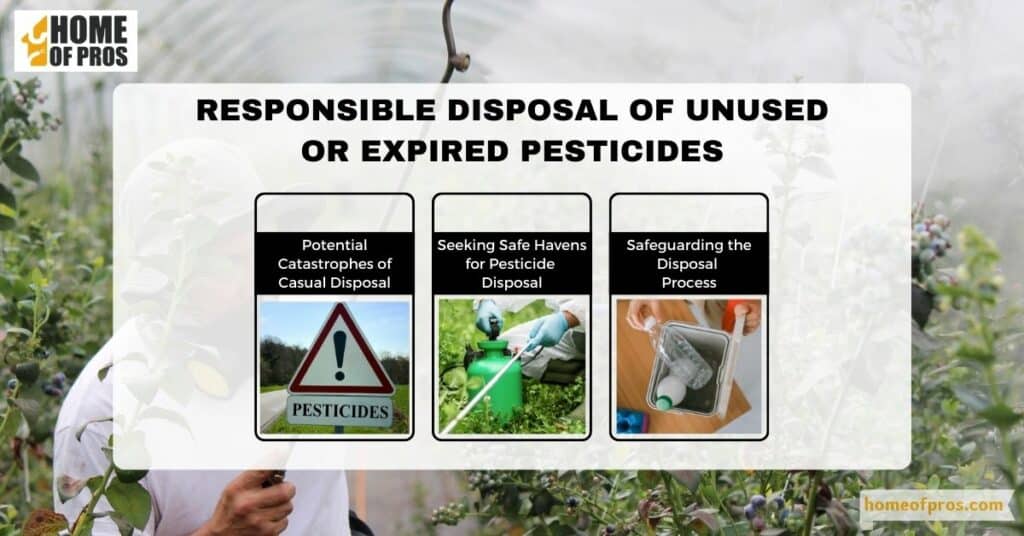
1. Potential Catastrophes of Casual Disposal
Casually discarding pesticides into our regular trash bins or pouring them down drains isn’t just an oversight—it’s an ecological threat. Such practices have the capacity to pollute our soil and vital waterways. More alarmingly, these harmful chemicals can find their way into our groundwater, posing significant health risks to aquatic ecosystems and, by extension, human health.
2. Seeking Safe Havens for Pesticide Disposal
The responsibility of disposing of these potent compounds shouldn’t be shouldered by regular waste facilities. Instead, we should seek the expertise of specialized hazardous waste centers, designed to neutralize and manage such chemicals. Moreover, many communities, recognizing the importance of this issue, organize hazardous waste collection events. These events are not just about disposal—they’re about community, education, and our collective responsibility to the environment.

3. Safeguarding the Disposal Process
When preparing pesticides for disposal, it’s paramount to keep them in their original containers, ensuring that their labels, which offer vital information, remain clear and legible. This aids waste management professionals in understanding the compound and ensuring its safe treatment. Additionally, mixing different pesticides might seem like a space-saving solution, but it’s fraught with dangers, potentially leading to hazardous chemical reactions. For any liquid residues, turn to trusted absorbents like cat litter or even newspapers. Once absorbed, they can be safely sealed within a plastic bag, ready for disposal.
To conclude, the role of pesticides shouldn’t cast a long, concerning shadow on our environment once their primary task is done. With every responsible disposal action, we reiterate our commitment to a planet where nature and progress coexist in harmony.

The Environmental Impact of Irresponsible Pesticide Use and Disposal
Pesticides, when mismanaged, become more than just agents against pests; they evolve into perpetrators of environmental degradation. Recognizing the far-reaching consequences of our actions is the first step in understanding how to utilize pesticides without compromising our planet’s well-being.
Key Environmental Consequences:
- Water Contamination: Pesticides can leach into groundwater, rivers, and oceans, posing risks to aquatic life and potentially infiltrating human drinking sources.
- Wildlife Threats: From bees crucial for pollination to birds and mammals, many creatures face toxicity risks when exposed to irresponsibly used pesticides.
- Soil Degradation: Excessive pesticide use can disrupt the natural balance of nutrients and microbes in the soil, hindering plant growth and health.
- Cumulative Ecosystem Effects: Over time, irresponsible pesticide practices can:
-
- Lead to loss of biodiversity.
- Disrupt natural predator-prey relationships.
- Exacerbate problems by creating pesticide-resistant pests.
The interconnectedness of our ecosystem means that a single misstep in pesticide use can cascade into multiple environmental issues. It’s not just about pests but about preserving the delicate balance of nature. As stewards of the earth, let’s employ pesticides judiciously, always weighing their benefits against the potential toll on our shared environment.
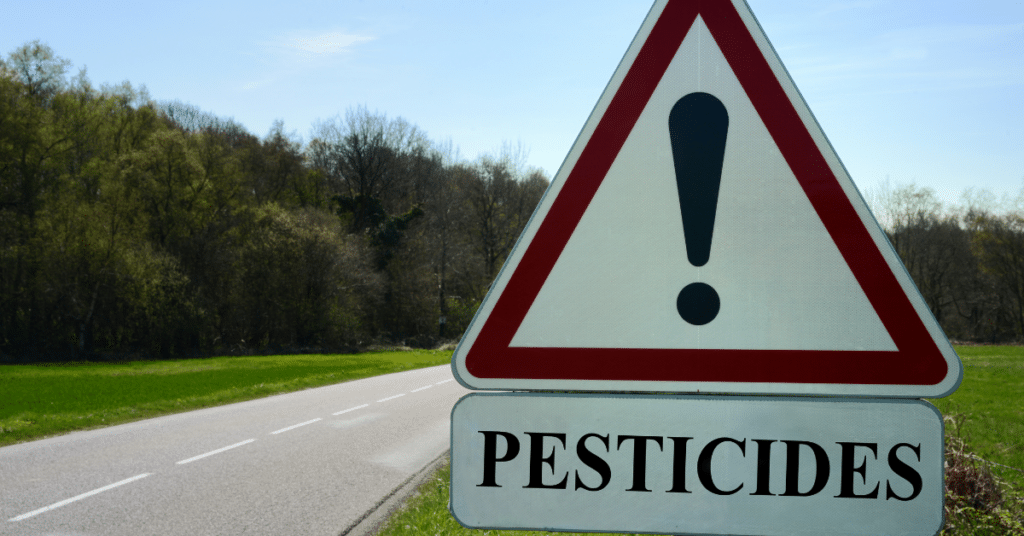
Conclusion
Navigating the complexities of pesticide use underscores a profound truth: while they are vital tools against pests, their misuse can harm our environment, contaminate water, degrade soil, and endanger wildlife. Every decision we make with pesticides echoes in our ecosystem’s health. Therefore, it’s imperative to prioritize safety and responsibility consistently. For those keen on delving deeper into safe pesticide practices, I recommend seeking out reliable resources and community workshops. Our collective choices today shape the environmental legacy we leave for tomorrow.

